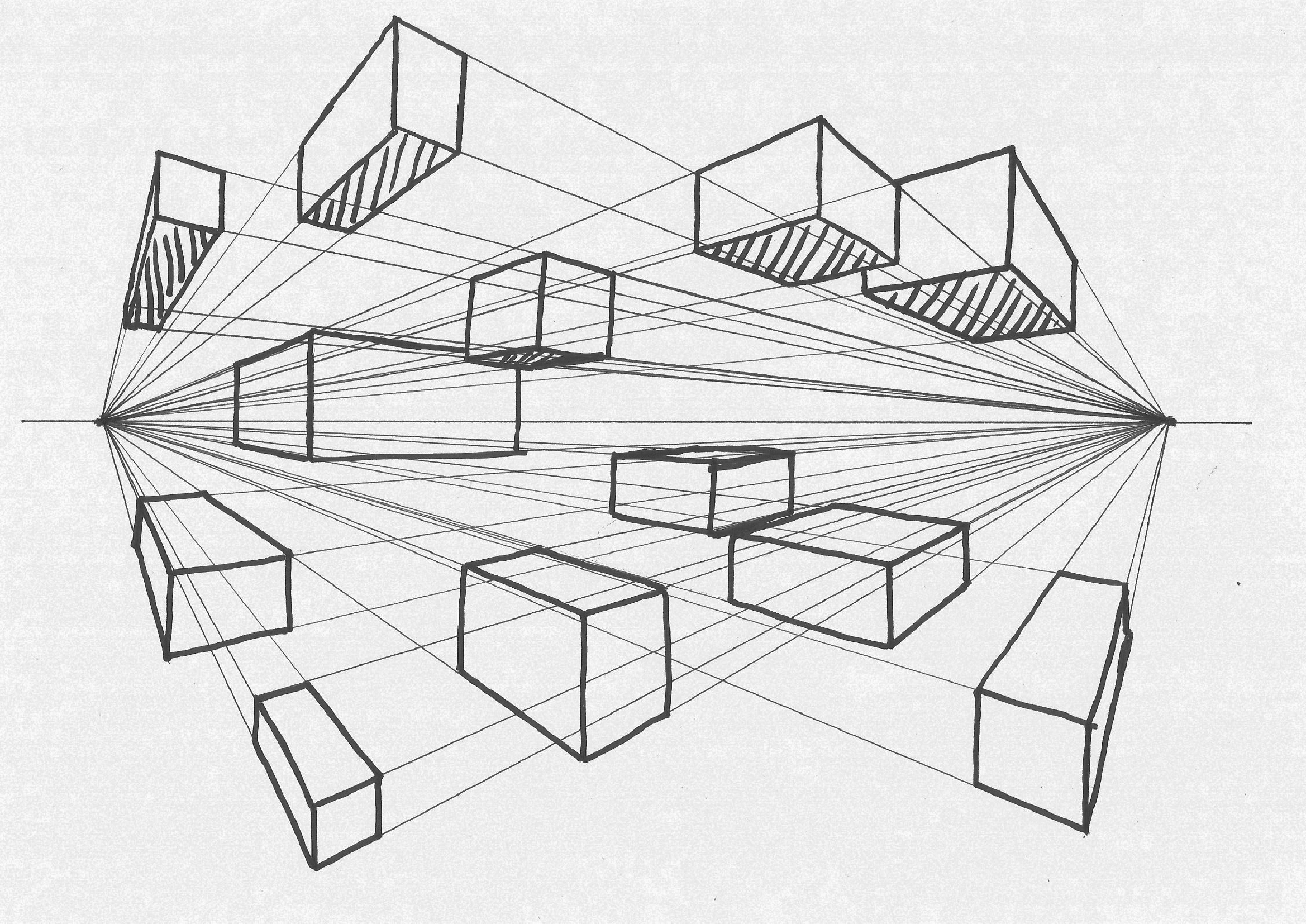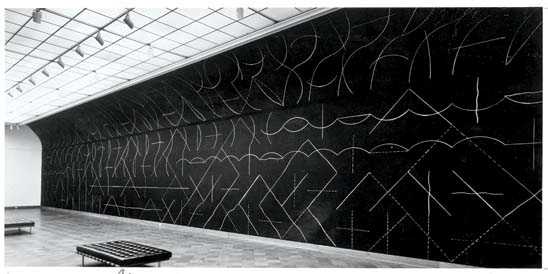
Learning Objectives
Students will be able to demonstrate technical accuracy when documenting three dimensional structures on a two dimensional picture plane. In addition to being able to accurately depict space, students will also be able to realistically render texture and value changes found in the landscape.
Materials
- Drawing Pencils
- Sketchbook
- 18” by 24” sheet of white drawing paper
- Yardstick
Sketchbook Mini-Assignment
1. Watch and take notes on the videos below.
2. In your sketchbook, draw 2 examples each of a 1 and 2 point perspective.
3. Draw an example of a bird’s eye view and a worm’s eye view.
Project
Perspective drawing is a method of working in two dimensions to create the illusion of a three-dimensional subject. The illusion may be presented as a drawing, painting, or other graphic work. Objects and their environments are depicted on a two-dimensional plane but appear as if viewed in real three-dimensional space.
Perspective theory is often separated into two parts: linear perspective and atmospheric perspective. Linear perspective addresses how the shapes, edges, and sizes of objects change in appearance when seen at different positions relative to the observer. The distance between the object and observer, the attitude (rotation and elevation) of the object and the viewing angle of the observer are all important in linear perspective.
When you have decided on what you are going to draw, the next step is to locate your horizon line. The horizon line is usually your eye level. This becomes tricky if you are sitting below or above your object. These types of perspective are referred to as worm’s eye (below) and bird’s eye (above) views.
Your finished drawing should be free of smudges and wrinkles. Take care of it.
Research
Lego Builder Website (This is awesome. You need the Google Chrome browser.)



































































































